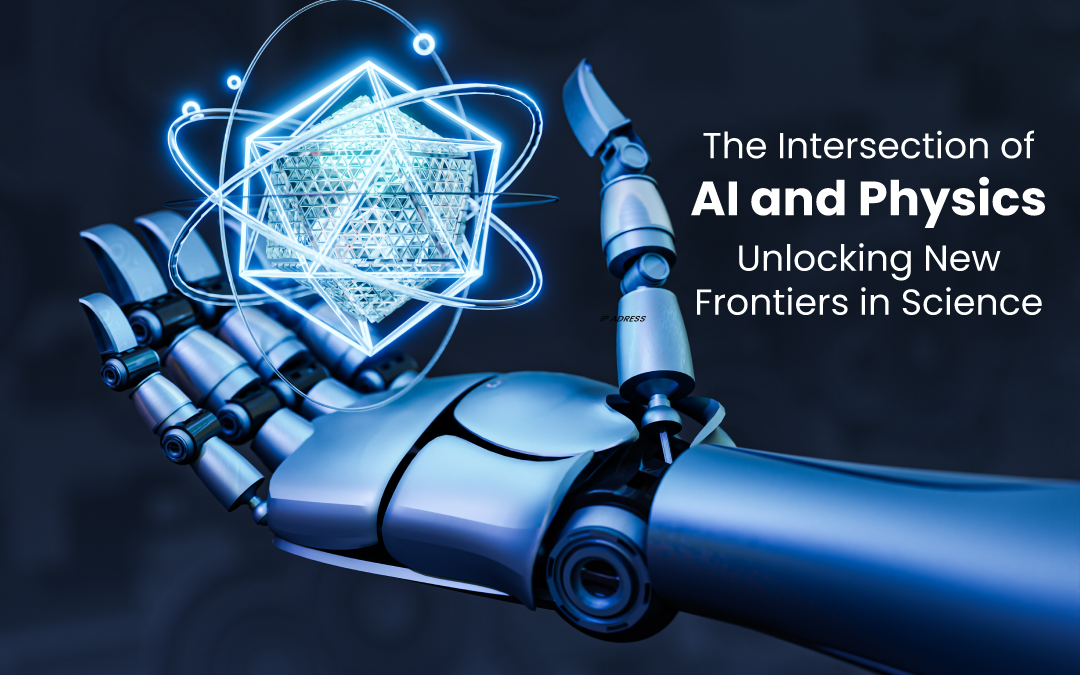
Artificial Intelligence (AI) and physics are two of the most transformative fields in modern science. AI, with its ability to analyze vast amounts of data and identify patterns, and physics, the fundamental science of matter and energy, intersect in ways that promise to revolutionize our understanding of the universe. This article explores the synergy between AI and physics, examining how these two fields are converging to unlock new frontiers in science.
AI Techniques in Physics
Machine learning, a subset of AI, has become a crucial tool in physics research. Neural networks, inspired by the human brain, are particularly effective in recognizing patterns and making predictions based on large datasets. In physics, neural networks are used to identify particles in high-energy collisions, predict material properties, and analyze astronomical data.
Deep learning, a more advanced form of machine learning, involves neural networks with many layers. These algorithms excel at processing complex, high-dimensional data. In physics, deep learning is applied to simulate physical systems, optimize experiments, and even explore theoretical concepts such as string theory.
Quantum Computing and AI
Quantum computing, which leverages the principles of quantum mechanics, offers unprecedented computational power. The synergy between quantum computing and AI has the potential to solve problems that are currently intractable with classical computers. For instance, quantum algorithms can exponentially speed up certain AI tasks, such as optimization and cryptography.
The integration of AI and quantum computing could lead to breakthroughs in various fields, from materials science to cryptography. In physics, this combination might unlock new insights into quantum gravity, the nature of dark matter, and other fundamental questions.
Simulation and Modeling
AI has significantly enhanced the accuracy of simulations and models in physics. Traditional simulations often rely on approximations, but AI can refine these models by learning from vast amounts of data. This leads to more precise predictions and a better understanding of physical phenomena.
In theoretical physics, AI is used to develop predictive models that explore uncharted territories. These models can suggest new experiments, identify potential discoveries, and even propose new theories. AI-driven simulations help physicists test hypotheses and explore scenarios that would be impossible to investigate experimentally.
Current Research and Developments
At CERN, the European Organization for Nuclear Research, AI plays a crucial role in analyzing data from particle collisions. The Large Hadron Collider (LHC) generates vast amounts of data, and AI algorithms help physicists sift through this information to identify significant events. AI has been instrumental in discoveries such as the Higgs boson and continues to aid in the search for new particles.
AI algorithms have facilitated numerous discoveries in particle physics. For example, machine learning techniques have improved the sensitivity of detectors, allowing scientists to observe rare particle interactions. AI also helps in modeling particle behavior, enhancing our understanding of fundamental forces.
Astrophysics and Cosmology
In astrophysics, AI is used to map the universe with unprecedented accuracy. AI algorithms analyze data from telescopes and space missions, identifying celestial objects and structures. This has led to the discovery of new exoplanets, galaxies, and cosmic phenomena.
AI's ability to process vast amounts of data makes it a valuable tool in the search for extraterrestrial life. Machine learning algorithms analyze signals from space, searching for patterns that might indicate the presence of intelligent life. AI also aids in the study of exoplanet atmospheres, helping scientists identify potentially habitable planets.
Condensed Matter Physics
In condensed matter physics, AI is revolutionizing the discovery of new materials. Machine learning models predict the properties of materials based on their atomic structure, speeding up the process of finding materials with desirable characteristics, such as superconductivity or high strength.
AI is particularly impactful in superconductivity research. By analyzing experimental data, AI algorithms can identify the conditions under which materials exhibit superconductivity. This accelerates the search for materials that can conduct electricity without resistance at higher temperatures.
Practical Applications
For those interested in the practical applications of AI in solving complex physics problems, the development of tools like the AI physics solver offers a glimpse into the future of automated scientific discovery.
Technological Innovations
The intersection of AI and physics is driving technological innovations. AI techniques are being used to design new electronic devices, optimize manufacturing processes, and develop advanced materials. These innovations have far-reaching implications for industries such as electronics, aerospace, and healthcare.
The impact of AI-driven advancements in physics extends to various industries. For example, AI is enhancing the development of renewable energy technologies, improving medical imaging techniques, and optimizing transportation systems. These applications demonstrate the practical benefits of integrating AI with physics.
Enhancing Research Methodologies
AI is enhancing research methodologies by improving data analysis techniques. Machine learning algorithms can process vast datasets more efficiently than traditional methods, uncovering patterns and correlations that would otherwise go unnoticed. This leads to more accurate and insightful research outcomes.
AI is also streamlining experimental processes in physics. Automated systems can control experiments, optimize conditions, and analyze results in real-time. This reduces the time and effort required for experimental research, allowing scientists to focus on interpretation and discovery.
Conclusion
The intersection of AI and physics represents a transformative frontier in science. The synergy between these fields is driving new discoveries, enhancing research methodologies, and paving the way for technological innovations. As we continue to explore this intersection, the potential for unlocking new frontiers in science is immense. The collaboration between AI and physics promises to shape the future of scientific research and our understanding of the universe.
Share this post
Leave a comment
All comments are moderated. Spammy and bot submitted comments are deleted. Please submit the comments that are helpful to others, and we'll approve your comments. A comment that includes outbound link will only be approved if the content is relevant to the topic, and has some value to our readers.

Comments (0)
No comment